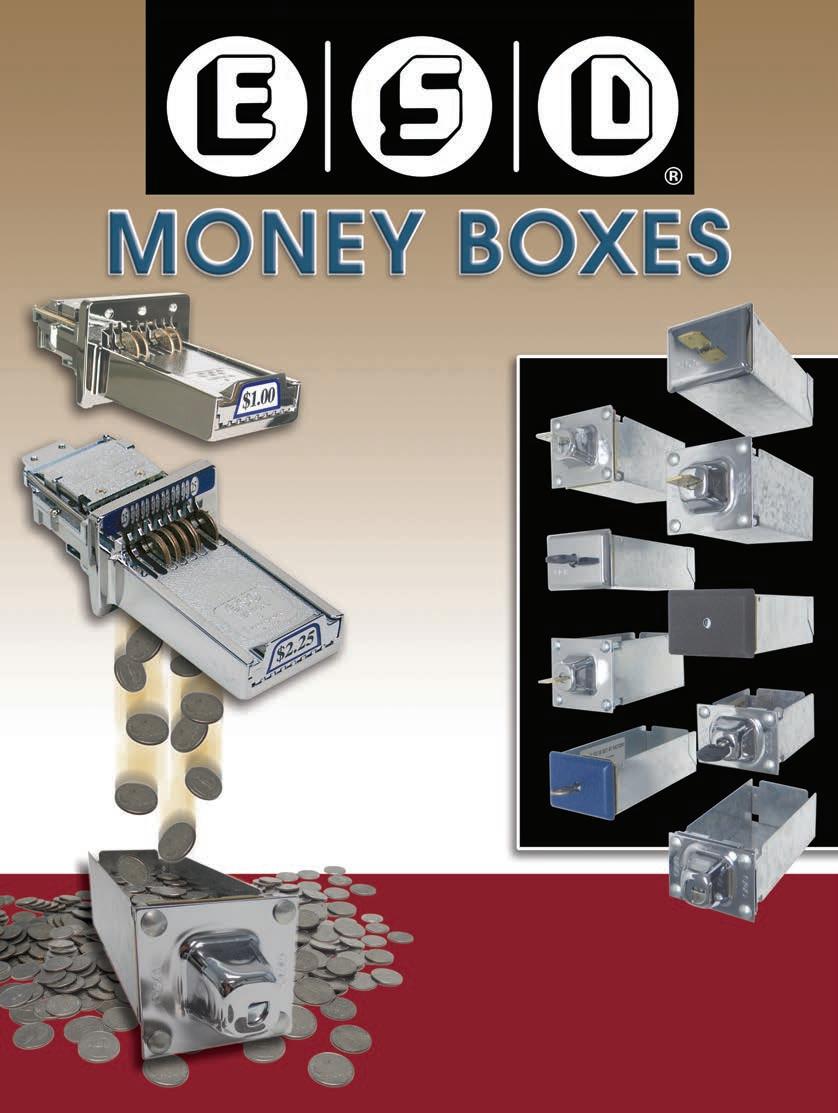












































We’ve personally handled insurance for hundreds of laundromats! We’ve already dealt with most any issue your business is likely to face. If you have any questions about insuring laundromats, we can and will give you prompt, clear answer. Skeptical? Call us with a question and nd out for yourself.
There’s more: We’re just two members of NIE’s team of experts. NIE has been handling fabricare insurance since 1915!



(Cover image: © denisismagilov/depositphotos)

By making strategic improvements and educating their customers on best practices, self-service laundry owners can alleviate high utility costs and boost overall efficiency. Here are a dozen tactics that store owners can embrace in an effort to combat those rising costs.
Laundry owners from around the country discuss their approach to pricing and the need to balance cost, convenience and customer satisfaction when deciding what to charge for self-service and washdry-fold.
18 POINTERS FROM PAULIE B: HOW TO DIAGNOSE, FIX COMMON EQUIPMENT ISSUES
Laundromats are packed with many machines, each of which has many parts that will eventually fail, says retired multi-store owner Paul Russo. In his column this month, he looks at the most common failures, the reasons behind them, and what can be done to diagnose and fix them. The good news, according to Russo, is that many common equipment issues cost very little to fix.
American Coin-Op has released podcast episodes on a variety of industry-related topics? Give one a listen at AmericanCoinOp. com/podcasts.









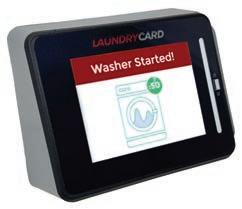



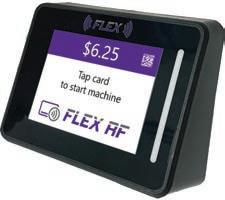



Bruce Beggs
The foundation of any self-service laundry business is built—in part, at least—on the pricing of its wash and dry cycles. The decisions made about how much to charge for using one’s self-service equipment and for added-value services like wash-dry-fold and pickup and delivery can be the difference between success and failure.
In this month’s cover story, “Preferred Pricing Strategies,” you’ll hear from 10 laundry business owners from around the country. They share their positions on vend pricing and service pricing while weighing their bottom-line desires against the needs of their customer base.
Beginning on page 6, you’ll learn their No. 1 reason for raising prices, how (or if) the competition influences their pricing, the pricing choices they see as having been successful, and more.
“We hope the increased revenue will be better than the loss of customer support because of the increased price,” says Florida’s James Radovic. “This is always a gamble.”
“Raising our prices is essential to a healthy business and its ability to properly serve our community,” says Ohio’s Dave Menz.
“I’m not in business to be the cheapest provider of these services,” states South Dakota’s James (Clark) Sowers, “I’m in business to be the best provider.”
Also in this month’s issue is “Combating Rising Utility Costs,” featuring a dozen tactics you can embrace in an effort to mitigate those costs, and “How to Diagnose, Fix Common Equipment Issues,” columnist Paul Russo’s take on the most common failures, the reasons behind them, and what can be done to remedy them.
I hope that you’re having a healthy, profitable summer season. I’ll see you again next month.
Bruce Beggs Editorial Director
Charles Thompson, Publisher
E-mail: cthompson@ATMags.com Phone: 312-361-1680
Bruce Beggs, Editorial Director E-mail: bbeggs@ATMags.com Phone: 312-361-1683
Mathew Pawlak, Production Manager
Nathan Frerichs, Digital Media Director E-mail: nfrerichs@ATMags.com Phone: 312-361-1681
Douglas Pratt Michael Schantz Tony Regan Matt Simmons Sharon Sager
Linda Lee, National Sales Manager E-mail: Linda@ATMags.com Phone: 218-310-6838 or 312-361-1682
OFFICE INFORMATION Main: 312-361-1700
847-504-8175
ACO@Omeda.com www.AmericanCoinOp.com


1
Coin-Op (ISSN 0092-2811) is published
Subscription prices, payment in advance:
$50.00; 2
$100.00. Single copies $10.00 for U.S. Published by American Trade Magazines LLC, 650 West Lake Street, Suite 320, Chicago, IL 60661. Periodicals postage paid at Chicago, IL and at additional mailing offices.
POSTMASTER, Send changes of address and form 3579 to American Coin-Op, Subscription Dept., 125 Schelter Rd., #350, Lincolnshire, IL 60069-3666. Volume 65, number 8. Editorial, executive and advertising offices are at 650 West Lake Street, Suite 320, Chicago, IL 60661. Charles Thompson, President and Publisher. American Coin-Op is distributed selectively to owners, operators and managers of chain and individually owned coin-operated laundry establishments in the United States. The publisher reserves the right to reject any advertising for any reason.
© Copyright AMERICAN TRADE MAGAZINES LLC, 2024. Printed in U.S.A. No part of this publication may be transmitted or reproduced in any form, electronic or mechanical, without written permission from the publisher or his representative. American Coin-Op does not endorse, recommend or guarantee any article, product, service or information found within. Opinions expressed are those of the writers and do not necessarily reflect the views of American Coin-Op or its staff. While precautions have been taken to ensure the accuracy of the magazine’s contents at time of publication, neither the editors, publishers nor its agents can accept responsibility for damages or injury which may arise therefrom.




by Bruce Beggs, Editorial Director
In the competitive landscape of laundromats, pricing services is a critical art that goes beyond setting a simple rate per load. For laundromat owners, each pricing decision—from wash-and-fold services to premium detergent options—can have a ripple effect on operations and financial health.
It’s about mastering the balance between cost, convenience, and customer satisfaction, and how it can elevate a laundry business to new heights.
To get a sense of how today’s self-service owners approach the task, American Coin-Op interviewed 10 of them from around the country and serving differing customer bases. Here’s what they had to say.
Several of the owners interviewed for this article say their top reason for raising their vend prices is to counter rising costs.
“My No. 1 reason to raise prices is because my costs have increased,” says Patrick Dreis, who owns three Southern California laundromats and a commercial plant where his staff processes fluff-and-fold orders.
“Utilities. Overall, I try for 4%,” states Jan Barlow, whose Jan’s Professional Dry Cleaners in Clio, Michigan, includes an on-site laundromat. “I have (a) dry cleaner as well a laundromat so for someone who owns just a laundromat, that may be a different metric.”
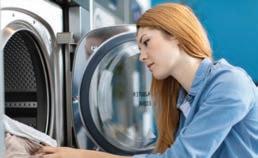
“We generally raise prices in order to keep up with our cost of doing business and factor in things like rent increases and also
(Main photo: © denisismagilov/Depositphotos)
increases in electricity, gas and water costs,” says Todd Ofsink, whose New York-based Todd Layne Cleaners & Laundromat offers washdry-fold pickup and delivery service throughout Manhattan.
Offsetting increasing costs related to utilities, supplies, labor, maintenance and other areas is why Sharon Sager raises prices at her Sierra Madre (Calif.) Laundry. The same goes for Kristyn Van Ostern and the Wash Street laundromat she co-owns with a partner in Manchester, New Hampshire.
For Dave Menz, who owns and operates the Queen City Laundry chain of four full-service centers in the Cincinnati area, the goal is always to keep margins above a certain level.
“This allows us to run our business at a high level, while continuously investing back into the business,” he says. “When costs increase, we raise prices to maintain those numbers. We are always conscious of the fact that our overall value proposition in the market must be commensurate with our prices as well.”
“The only reason we raise prices is to ensure we have a profitable business plan to allow us to stay in business,” says James Radovic, who owns Jupiter (Fla.) Laundry. “We hope the increased revenue will be better than the loss of customer support because of the increased price. This is always a gamble.”
Travis Unema, who owns Brio Laundry in Bellingham, Washington, believes in scheduling price adjustments twice a year.
“Increase (them) to maintain healthy profit margin on all machines,” he adds. “If you fall behind raising prices, it is harder to make larger price jumps. Increasing in smaller amounts spread over time is more manageable and won’t have that shock value.”
“Our in-store manager conducts quarterly surveys of our direct competition, recording information on pricing primarily, but also noting the cleanliness, amenities, and hours of each laundromat,” explains Kelly Castillo. With a partner, she operates Bubbles Laundry Service, a self-service laundry featuring on-demand WDF pickup and delivery based in Anaheim, California.
“We review it at a management level and decide if we need to implement any changes to our pricing strategy, hours, etc., at that time. So prices for each size of machine are evaluated, at minimum, four times per year.”
“Our first obligation is to remain open for our customers that we have made a commitment to,” says James (Clark) Sowers, who coowns four laundromats and two drycleaning plants in South Dakota with son Randy. “We need to compensate employees who provide the service for our customers. We need to pay our bills. We need to provide a safe, clean area of doing business for our customers. I’m not in business to be the cheapest provider of these services, I’m in business to be the best provider.”
Some of the owners interviewed factor their competitors’ pricing into their own pricing to varying degrees. A few say they pay no attention at all.
“There are three other laundromats within a one-block radius of our location and many more within a one-mile radius,” Castillo says. “Competition is heavy but there is enough business to support everyone. … We never seek to be the least expensive but do like to stay competitive.”
“Never, to rarely,” Barlow says of competitors influencing her own pricing. “I depend on journals like yours to provide some guidance. If I see something I didn’t consider about industry averages, I am prompted to take a serious look at what I am missing.” ▼
Offsetting utility costs is no longer the No. 1 reason that self-service laundry owners raise their vend prices, based on the results of American Coin-Op’s latest Your Views survey.
Generating more revenue is the top reason why the majority of owners polled (37.5%) make the decision to increase their store’s vend prices. Offsetting utility costs—which had been the top choice in two previous surveys dating back several years—is still a close second, at 29.2%.
Other operators say they raise prices for “other” reasons related to staying in business (16.7%), “to afford new equipment” (12.5%), or “to capitalize on new store improvements” (4.2%).
No respondents said they raise prices “to remain [their] area’s highprice leader” or because they “just raise prices every so often.”
Three-quarters of store owners polled say the prices that competitors are charging factor into their own pricing: 50% say “sometimes,” 20.8% say “rarely,” and 4.2% say “always.”
Nearly 71% of operators “don’t publicize price hikes in any fashion.”
Roughly 17% “make minimal effort to announce a price hike,” and 12.5% “let [customers] know what’s happening and why.”
Upon asking what type of pricing promotion customers favor most, American Coin-Op received a variety of responses, most involving loyalty programs, free drying, or time-of-day/day-of-week discounts.
We asked store owners what pricing strategy of theirs has been most successful. Here are some of the responses:
•“Tiered pricing for hot and warm water.”
•“We have always tried to increase our prices in the late summer/ early fall in time [for] the busier school year and winter season. We also have looked for opportunities to increase our pricing when customers are being bombarded with media reports of either rising costs or prices.”
•“Our prices start off lower than some of our competitors but, with cycle modifiers, we top out higher. Just like upsizing your meal at a fast-food restaurant.”
•“I don’t change my pricing. One price that has worked well is with the dryers: $1.50 to start the cycle and for (each) quarter added, you will get five minutes, and for every dollar coin added, (you) will get 20.”
We also inquired about wash-dry-fold pricing and how the laundry owner’s strategy there might differ from their self-service pricing. Here are some responses:
•“WDF pricing is entirely separate from self-service pricing, and must consider the costs of labor, supplies, and liability you are taking on.”
•“WDF is priced based off of what others in area are charging. We try to incorporate value for repeat customers. One item is adding bedding in clothes order wash instead of washing bedding separately for extra cost.”
•“At a minimum, it should be at least double self-service for the same size load. I price my WDF to match my attendants’ wages.”
American Coin-Op’s Your Views survey presents an unscientific snapshot of the trade audience’s viewpoints. Percentages may not add up to 100% due to rounding.
Subscribers to American Coin-Op emails are invited to participate anonymously in an industry survey each quarter. The entire trade audience is encouraged to participate to help better define owner/ operator opinions and industry trends.


“Sometimes. I always research what the competition is charging, but their prices don’t define my prices,” Sager reflects. “When determining vending machine product prices, I track my cost for the products I sell and make changes as product costs rise.”
“While we keep an eye on our local competition, we set our prices to be profitable regardless of our competitors’ prices,” asserts Radovic.
“We always check our competitors’ prices before implementing a price change,” Van Ostern says.
“Never!” exclaims Unema. “They have different (percentage) profit margins based upon equipment, lease, services, [store is] attended, and the list goes on! I try to stay focused on ensuring the profitability of what I am selling.”
“I do look at my competitors often,” says Dreis. “Not only their vend prices but their whole operation as it compares to mine. I set my prices based on my costs, not my competition’s prices.”
“Our competitor’s prices rarely weigh into the cost that we charge for customers that are doing their own laundry,” says Ofsink. “This is primarily due to the fact that we are located in New York City and people are not driving. We are in a good location with lots of foot traffic.”
“Sometimes, because I don’t believe anyone provides better service than we do,” asserts Sowers. “I don’t appreciate someone piggybacking on our pricing but not our quality.”
“At this point, we’ve separated ourselves from our competitors to such a high level that their prices are really not a factor at all,” Menz reports. “In many cases, we are 100-200% higher than them for certain machine sizes.”
Do you alert your customers to price changes? If so, how?
“We alert customers to price changes on our website and with signage in our storefronts,” Ofsink says.
“For retail, no notice is given,” Unema says. “Some customers will ask why, some will be frustrated, but most understand! If a customer is set up with a business account or a business agreement, then I will inform them ahead of time.”
“We let our customers know via email (if we have their email address) and with signage,” says Van Ostern. “If the promotion is available via [our payment system], we advertise it in-app as well.”
“I say nothing when I raise prices,” Dreis states.
“For any service that is prepay, they are notified before their next service,” Menz describes. “For us, that’s self-serve, drop-off service, vending and really anything but pickup and delivery. For pickup and delivery, we notify customers of price increases both two weeks out, and again one week out.”
“I don’t alert clients,” Barlow says. “Typically, we may have a promotion to help cushion the increase. The present economy and the overall media has been explaining costs, so we really don’t have much to add to the discussion.”
“Our pricing is noted on our machines, and we really don’t change them often at all,” according to Sowers.
“Generally no. I don’t mention it, and the customers seldom comment on the change,” says Sager. “I did, however, feel it was important to explain why I raised dryer prices during the gas utility price crisis in 2022-23.”
“The last price increase we had (about a year ago), we posted a general notice on our major cost increases (natural gas, electric and water/sewer utilities), showing the rate of increase we were experiencing,” Radovic explains. “I felt our customers were seeing the same thing personally and could relate to the reasons. We had very little customer pushback on this, once we shared our rationale.”
What type of pricing promotion do you think customers favor most?
“Customers love free wash days where all washers are free for a limited time,” Menz says. “This could be a customer appreciation day, or a grand opening. For card system and loyalty app stores, they also love ‘double your money’ promotions.
“We also recently installed [a] ... direct injection system for self-serve customers. After install, we offered the service with free detergent and softener for the first 60 days and that was a huge hit! We attracted many new customers that stayed after the promo and were able to accelerate adoption of these new cycle modifiers as well.”
“What I like to do is to buy customers a wash when I am in the store,” Sowers offers. “It’s personal and an opportunity to have a face-to-face relationship with them.”
Wash Street’s customers tend to favor promotions that provide immediate savings or added value, according to Van Ostern.
“This includes discounts during off-peak hours, loyalty programs that offer free washes after a certain number of visits, and bundled services such as discounts on wash-and-fold services when combined with self-service washes,” she describes. “Promotions that are easy to understand and use are also highly favored.”
“We have had to navigate the delicate balance of a booming commercial and WDF business with the needs of our self-service customers,” Castillo says. “We do not offer promotions on our slow self-service days simply because we prefer to utilize those slow times to process our contract orders, ensuring we have machines available for our self-service customers during our busy times.”
“For drop/fold customers, we have a customer loyalty program built around the frequency of [the] customer’s drop-off,” Radovic says. “For walk-in customers, we offer free soap on Tuesdays, Wednesdays and Thursdays. For commercial customers, we generally offer a reduced rate. We are researching additional items, like discounts for customers who bring in new customers, and offering email discount coupons.”
“Of all the pricing promotions that we have offered for self-serve laundry, offering free detergent and a discount for washers on Fridays have been our most successful,” Ofsink says.
“Setting your pricing schedule to be consistent and calculated,” says Unema. “Consistency calms customers! Don’t feel bad about raising prices; put it on your calendar and just do it.”
“I like having the ability on modern machines to have time-of-day pricing,” Dreis says. “I’ve heard positive feedback from customers about this.”
“We promote additional services and stay out of cost discussions,” Barlow states. “Our philosophy is service, quality and price. You get two of these three choices. Our focus is service and quality. We don’t discuss price.”
“I used to offer promotions when I had a fluff and fold service,” recalls Sager. “A favorite was comforter discounts in the fall and the spring. On the self-service side, my payment system offers ways to promote customer loyalty that customers can easily track themselves. Although it is not an official promotion, I’m always eager to spot someone soap/laundry products if they are new or have forgotten theirs. This really means a lot to them.”
Thinking back to the pricing decisions they’ve made while running their laundry businesses, the store owners recalled the ones they deemed successful.
“We like to price our larger machines slightly below our medium ones, and our mediums slightly below our small ones, on a per-pound basis,” Menz says. “This incentivizes [customers] with large amounts of laundry to combine them in larger machines. This saves them money, is more

Discover more options to attract more customers. KioClean laundry payment systems o er a blend of traditional coin boxes and modern mobile app payments, providing a versatile range of options to cater to diverse customer preferences.
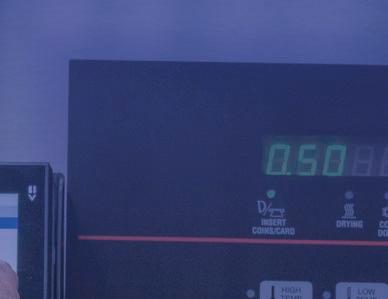




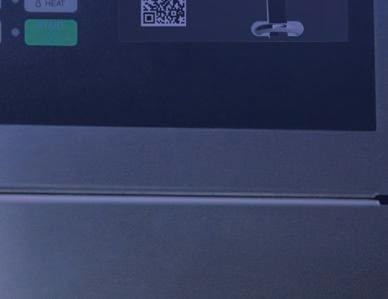



profitable for us, and saves the smaller machines for those with smaller loads.
Everyone wins!”
“Moving to full-cycle dry pricing structure has been, by far, the most profitable pricing decision I have made,” says Sager. “But in terms of regular price increases on washers/dryers, I try to avoid ‘sticker shock’ for my customers. One approach is to raise prices on just one aisle or one size of machine at a time, instead of doing the entire store at once.”
She also likes taking advantage of “temperature pricing.”
“When I started this approach, I set each temperature on the machines to increase in 25-cent increments. Now, when I change prices, I do the entire store at once, but the advantage with this method is that I don’t have to raise all the cycle prices at the same time. Instead, I can choose to raise only, say, the cold water on all the equipment. Then later, I can increase the warm-water price.”
“Our most successful pricing decisions are the ones that encourage customers to utilize our [store’s] downtime or less busy times,” Van Ostern says.
“At one store, I have dryers priced at 8 minutes for a dollar, or 10 minutes for a dollar if you buy $4 of drying, also known as full cycle,” Dreis explains. “At another store, I give a little more time if [customers] use the bottom dryers vs. the tops on stacked 30-pound machines. At that store, I’ve changed the usage considerably from top units to the bottoms; I’m trying to even out the wear on the machines.
“I get two dollar coins for 45 minutes on the bottom dryers vs. four quarters gets you 16 minutes on the top units. I’m amazed how the pricing changed the usage pattern at that store.”
“Because my staff is also using the washers/dryers for wash-dry-fold laundry and we have limited capacity, maintaining higher prices brings us the same revenue without having to serve as many self-serve customers,” Ofsink says.
Barlow’s business charges at least 50% more for WDF compared to selfservice: “We are figuring metrics. At this point, it’s by the pound, $2.35 to $4.50 depending on the items or products we process.”
“We raise prices as the costs of those services increase,” says Van Ostern. “For example, gas prices might not move in correlation with labor or utility prices, so we may need to change our delivery wash-and-fold prices separately from our coin-op pricing. We also have very different competitive sets within the two services.
“We have fewer competitors in the pickup and delivery service, so we can adjust prices more quickly there. Finally, our wash-and-fold pickup and delivery customers are much less price-sensitive, making pricing changes easier.”
“[The fluff-and-fold software I use makes] it pretty easy to adjust prices,” Dreis says. “I’m raising them every six months or so.
“I do most of our FnF work at a dedicated facility, and that’s not a self-serve laundromat. It’s much more dependent on labor costs. At our full-service plant, we produce more value-added product than a typical laundromat. I treat them as different but complementary businesses.”
“We do a lot of drop-off and pickup and delivery and find customers will pay significantly more for this level of service, as it saves them their time and labor,” Menz says. “In fact, we see our self-service, drop-off and pickup and delivery services as the ability to offer a ‘good, better, best’ pricing and service model.”
Sowers says his businesses charge “considerably” more for WDF because of the labor involved: “As I preach, there is always a better value somewhere. However, customers who come for WDF rarely complain about prices.”
“Our wash-dry-fold services are customized and we give customers many choices for detergents, stain fighters, fabric protectors, and added scent,” Ofsink describes. “We offer something that is a greater competitive advantage vs. customers doing their own laundry, and charge a larger premium.”
The significant amount of WDF business that Radovic’s laundry does keeps his employees and equipment busy: “We have dedicated a few washers and dryers for attendant use only, but we have enough equipment to handle the walk-in customers. We also have different charges for pickup/ delivery customers and for commercial customers.”
Unema conducts time studies with his team to ensure profitability and quality controls, and to set up its procedures.
“Once you have your data points, you will be able to price WDF to maintain its profitability,” he says. “Main things to focus on (are) employee wages, time spent on orders, cost of goods sold per order, and utilities used per order.”
“Although I no longer provide a wash and fold service, when I did, I charged by the pound for most items and by the piece for items like comforters and rugs,” Sager says. “In hindsight, I should have charged significantly more than I did. This is a premium service with high costs.
“I encourage owners who offer, or plan to offer, wash and fold services to take the time to determine what it costs them per pound to process a wash and fold order (including the labor, supplies, equipment costs, insurance, utilities, delivery vehicle costs, etc.). From there, it is much easier to determine a realistic price for this service.”
To conclude their interview, we asked the laundry owners if they cared to add anything else about laundromat pricing strategies.
“Simply put, you have to have a business plan for profitability,” says Radovic. “And you set your various prices to ensure long-term health of your enterprise. You might even have to reduce your prices in specific cases for increased customer support. Stay flexible, but keep in mind the long term.”
“Always try to find ways to add value to the customer experience,” advises Sager. “When you offer something above and beyond the competition, customers may appreciate the extra effort and accept the price increases more readily.”
“More so talking about WDF, offering unique and differentiated services allows you to compete on much more than price, allowing for larger profit margins,” Ofsink suggests.
“I don’t believe in raising prices to offset poor management,” Sowers states. “We need to have our management and expenses in order before we dump that burden on customers.
“I believe the customer deserves the quality we are charging them for. The store needs to be clean. The equipment needs to work. The customer needs to be safe. The product of wash-dry-fold needs to be excellent. If you want to … remain in business, you have a greater chance by providing the highest quality of service and to stand behind it and back it up.”
“Customers would rather pay more for a clean and safe place to do their laundry,” Unema says. “Price for the customer you want in your store. Then maintain that customer’s expectations by having clean, working equipment and they will be willing to pay for the experience they want.”
“I still believe as an industry, we are drastically underpricing our services and this negatively affects owners’ ability to reinvest as needed,” Menz says. “The majority of the industry is still struggling, [in my opinion], and that makes me sad.
“Raising our prices is essential to a healthy business and its ability to properly serve our community. Raise those prices, reinvest as needed, and serve your community at a high level. That’s the key to success in this industry!”













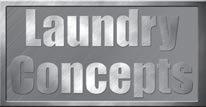




































Self-service laundry owners have faced a significant challenge in recent years: rising utility costs. As the costs of water, electricity and natural gas have increased, maintaining profitability while offering a reliable service has become more difficult.
But by making strategic improvements and educating customers on best practices, owners can alleviate high utility costs and boost overall efficiency. Here are a dozen tactics that store owners can embrace in an effort to combat rising costs:
Investing in energy-efficient equipment is one of the most effective ways to reduce utility costs. Modern washers and dryers are designed to use less water and electricity while maintaining high performance.
Utilizing the right mix of new, cutting-edge laundry equipment reduces utility expenses plus offers new profit-generating opportunities. It may require a sizable investment but could make sense for the operation once costs tied to older, less-efficient equipment are taken into account.
Today’s advanced vended models offer many energy- and resource-saving features, including automatic weighing of loads so that precise amounts of water are used; high-speed extraction that removes moisture from every load, reducing dry time; customized wash programs that adjust water level, wash time and rinses per load based on customer need or preference; stronger machine frames and leak detection that reduce preventive maintenance and repairs; and dryer sensors that lower the operating temperature or stop the drum altogether when laundry is determined to be dry.
It’s no surprise that water is a major expense for laundromats, so optimizing its usage is crucial. Investing in a water recycling system can drastically reduce water consumption. These systems collect and filter water from the washers, allowing it to be reused in subsequent wash cycles. This not only lowers water bills but also reduces the environmental impact.
Install low-flow fixtures in sinks and toilets to reduce water usage. These fixtures are designed





to maintain adequate water pressure while using less water.
See that all plumbing systems and machines are regularly maintained to prevent leaks. Even small ones can lead to substantial water waste over time.
These can help laundromat owners monitor and control energy usage more effectively. They provide real-time data on energy consumption, allowing for informed decisions to adjust.
Smart meters provide detailed information on energy usage, enabling owners to identify peak usage times and areas of inefficiency. This data can be used to adjust operating hours or stagger machine usage.
Programmable thermostats control heating and cooling systems more efficiently. These devices can be programmed to adjust temperatures based on occupancy, reducing energy consumption when a laundromat isn’t in use.
Automated lighting systems use sensors to turn lights on and off based on occupancy.


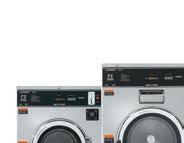
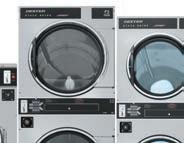



















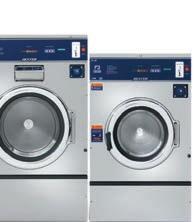

This ensures that lights are only used when necessary, reducing electricity costs.
4.
Installing solar panels could significantly reduce electricity costs. Solar energy is a renewable resource with the potential to provide a substantial portion of a laundromat’s energy needs. While the initial investment might be high, long-term savings coupled with tax incentives make it worthwhile to consider.
If a laundromat is in an area with consistent wind patterns, small wind turbines can be a viable alternative energy source. Wind energy can complement solar power, providing additional savings in electricity.
Enhancing efficiency throughout an operation can lead to significant energy savings. By optimizing various aspects, laundry owners can reduce waste and improve overall performance. First, look at load optimization. Encourage customers to use machines at full capacity, because underloading machines not only wastes water and energy but also reduces wash-and-dry cycle efficiency. Clear signage and staff education can help promote optimal usage.
Regularly maintaining machines ensures they operate at peak efficiency. Scheduled maintenance can prevent breakdowns and extend the lifespans of equipment, reducing the need for costly repairs and replacements.
And train employees on best practices for energy and water conservation. Doing simple things such as turning off unused machines and promptly addressing leaks can significantly impact utility costs.
Helping customers to understand how energy and water conversation can impact the laundry’s — and, by extension, their — costs can boost efficiency.
Place informative signage throughout the laundromat to educate customers in why conserving water and energy is important. Provide tips on how to load machines properly and to use settings that minimize utility consumption. Use incentive programs to encourage customers to visit the store during off-peak hours. Discounts or loyalty rewards for usage during slower times can help balance the load on machines and reduce energy costs.
And be sure to market the laundromat’s commitment to sustainability and energy efficiency. Highlighting eco-friendly practices can attract environmentally conscious customers and enhance a business’ reputation.

Laundry management software provides insights into machine usage, energy consumption and maintenance needs, supplying data that can be used to make informed decisions about equipment upgrades and operational adjustments.
Mobile apps can enhance customer experience and operational efficiency by allowing customers to check machine availability, pay for services, and receive notifications when their laundry is ready.
Integrating Internet of Things (IoT) devices into laundry machines can provide real-time data on performance and usage. This can be used to optimize machine settings, schedule maintenance and detect issues early.
Various financial incentives and rebates may be available to laundromat owners who invest in energy-efficient equipment and practices. Research local, state and federal programs that offer support for energy conservation initiatives in the form of tax credits, utility company rebates, or grants or low-interest loans.
Partnering with local organizations and community groups can provide additional support and resources for energy conservation efforts. There are local government programs focused on sustainability and energy efficiency. They often offer resources, expertise, and funding opportunities for small businesses.
Environmental organizations promote energy conservation initiatives.
And work with utility companies to identify opportunities for reducing energy consumption. They may offer audits, recommendations, and financial incentives to help laundromat owners implement energy-saving measures.
10.
By encouraging customers to adopt energyefficient habits, laundromat owners can reduce overall consumption.
Educate customers on the importance of loading machines to their recommended capacity. Overloading or underloading can lead to inefficient use of water and energy. Provide clear instructions on how to achieve optimal loads. Guide customers on selecting the appropriate wash cycles for their laundry needs. For example, using cold water for most loads can save energy, and shorter wash cycles can be
effective for lightly soiled clothes.
Encourage customers to use the dryer efficiently. This includes cleaning the lint filter before each use to improve airflow and reduce drying time, as well as using appropriate heat settings based on fabric type.
Promote using the laundry during off-peak hours to help balance the load on machines and reduce strain on utilities during peak times.
11. Sustainable Practices and Marketing
Embracing sustainable practices and marketing them effectively can enhance the laundromat’s reputation and attract a loyal customer base. Highlighting eco-friendly initiatives can set the business apart in a competitive market.
Offer or recommend eco-friendly detergents that are biodegradable and free from harsh chemicals. Educating customers on the benefits of using such products can align with the laundromat’s sustainability goals.
Implement recycling programs for plastic bottles, detergent containers, and other recyclable materials. Providing convenient recycling bins and educating customers on their use can promote responsible disposal.
Engage with the local community through events, workshops or partnerships with environmental organizations. Hosting events that promote sustainability can raise awareness and foster a sense of community involvement.
12.
By monitoring utility costs, customer feedback and operational efficiency, laundromat owners can adapt their approaches to achieve optimal results.
Track key performance metrics such as water and energy consumption, machine utilization rates, and maintenance costs. Analyzing this data can identify trends and areas for improvement.
Survey customers to gather feedback on their experience and satisfaction with the laundromat’s services. Understanding customer preferences and pain points can inform adjustments to operational practices and customer education efforts.
Stay informed about advancements in technology and best practices for energy and water conservation. Continuously exploring new opportunities for improvement can keep the laundromat competitive and sustainable.
In closing, by adopting a proactive approach and implementing comprehensive strategies, utility costs can be effectively managed. By taking even just a few of the actions described here, laundromat owners can not only combat rising utility costs but also create a more sustainable and profitable business.

• AllianceLaundryPromotesEndahl toGMPostinDistribution
• EVIIndustriesAcquires EdBrownDistributors
• EVIIndustriesAcquires LaundryProofFlorida
• B&CTechnologiesHonorsDistributors for 2023 Achievements
• DexterLaundryCelebrates130Years...
• MakingtheLeapfromWash-Dry-Fold toCommercialLaundry
• AI:GettingtheMostfrom EvolvingTechnology
• PointersfromPaulieB:PlanningFor andIntegratingLaundryUpgrades
• TipsandToolsforEvaluating NewTechnology
From AmericanLaundryNews.com:
• GoodwillClosingMilwaukee LaundryOperation
• BrobecktoBecomeALMPresident,CEO
From AmericanDrycleaner.com:
• BattlingBurnoutatYour DrycleaningCompany (WE)
• DryCleanerEmbracesLaundry Ownership for Surprising Gains (WE)

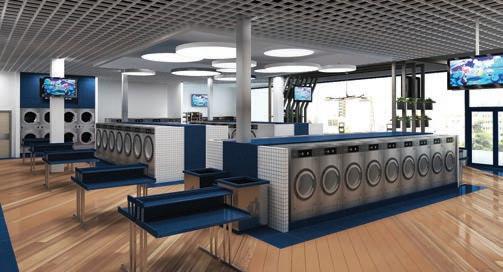


Paul Russo
Laundromats are packed with many machines, each of which has many parts that will eventually fail. All told, there are probably thousands of parts in a typical selfservice laundry.
It’s been my experience that the majority of equipment failures come from a lack of routine maintenance and are many times caused by lint buildup.
So let’s take a look at the most common failures, the reasons behind them, and what can be done to not only diagnose and fix them, but to slow down their frequency.
The good news is that many common equipment issues cost very little to fix … once you know how to diagnose and repair them.
Let’s start with the simplest understanding of how a
washer works. Water goes in, the motor turns the basket, the water drains out, and the motor spins the basket.
OK, so you come in and someone in your crew tells you, “A customer said Washer No. 17 doesn’t have enough water during the cycle.” So you turn on the machine to check it and discover that it’s not filling at all, but you can hear the water entering and see it vigorously flushing down the soap boxes.
At least you know it’s not the fill valves, so the drain valve must be only closing partly or not at all.
You’ll need to shut the power down, open the machine and inspect the inside of the drain valve by removing the hose from the tub to the valve … hey, it’s an obstruction!
If you’re lucky, you’ll see something inside preventing the valve door from sealing. It could be anything: a bottle cap, credit card, keys, etc. You can clean out the valve, put the hose back on, and try again. Most likely that fixes it.


If you have troughs, you can easily check to see if any washers are leaking water out the back during the wash while the drain valve should be closed.
These partial obstructions are an insidious waste of water since the machine is continuously trying to fill the machine throughout the cycle as the water gets lost down the drain. Sometimes, it goes the other way and the washer won’t drain, or it takes a long time.



This is also from an obstruction, namely a lint ball that is plugging the drain valve so much that the water can’t drain out. Removing the lint ball should fix it. If there’s no lint ball in the valve, there could be a buildup further down the drain so you’ll need to visualize and confirm by removing the drain hose behind the washer. It’s also possible that the washer has a blockage at the bottom of the tub before reaching the drain valve. Visualize the tub drain by shining

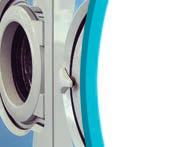

a flashlight downward so you can peer through the holes of the basket.
The next most common drain valve issue is that the valve isn’t getting the power to shut its door. This is most commonly due to the air pressure hose that actuates the fill switch.
If air is leaking from the hose, or if gunk has it blocked at the bottom, the air cannot rise up the hose to create enough air pressure to trigger the fill switch. Clean the gunk out of the bulb.
I found that after a few years, the end of the hose that is slipped over the level switch nipple can stretch out. Remove the hose, cut about one-third of an inch off and reattach.
If you have a machine that contains wet, soapy laundry at the end of the cycle, the customer likely put soap in the softener compartment. But if they didn’t, the cause is almost surely a blocked drain.
Coin Mechanism Jams, and Card Reader
Malfunctions — Every now and then, a customer inserting coins or cards will have soap or softener on their fingers. It’s transferred and some is rubbed onto the mechanism’s raceway, which will attract dust and dirt. The amount ▼








is very small, of course, but after a couple years of this, you get a buildup inside the mechanism that either causes a jam or a miscount.
The solution is to simply clean it. Alcohol and Q-tips® are useful for this. Don’t forget to clean the optic switch and check its alignment.
For card readers, I liked running a credit card cleaning card—simply a fibrous card soaked in alcohol or similar cleaner—through the machine. For bill acceptors, I recommend— you guessed it—bill acceptor cleaning cards to keep them operating.
Drum Isn’t Turning — First, check the belt to see if it has broken or slipped off its pulley; if the basket turns too easily, then check belts.
Also, check the washer’s fuse, which is usually located at the back of the machine. If a fuse blows, there is a reason, but not always; the machine may just have the wrong fuse in it.
While I’m not familiar with variable frequency drives, I do know that when a VFD fails, it’s often due to lint clogging its fan, which in turns causes it to overheat.
With three-phase washers, it’s common for
relays to go bad. Also known as contactors, relays can have burnt points, or a wire may have broken off due to metal fatigue from years of vibration.
Door locks and switches can also cause the basket not to turn. They either go out of alignment, or just break. Sometimes, a washer door lock will be so gunked up with lint, dirt and grime, the solenoids don’t work properly and can’t actuate the locks and switches.
I strongly recommend keeping a repair log, a record of all your repairs for every piece of equipment in your mat. This includes your boiler, HVAC, vending machines, ATM, etc.
I bought a spiral notebook and labeled each blank page for each piece of equipment. Whenever I completed a repair, I jotted the date, the part I changed, how much it cost, and why I changed it. Armed with this information, I could spot trends and pricing history, etc. With things today, you could keep a repair log on your smartphone or tablet.

For example, you think that water inlet valve diaphragms are failing often, so you refer to your repair log to confirm it.
You see that you’ve had 25 diaphragms go bad in the past year. If you have 40 washers with five diaphragms each, that’s 200 in total. You should take action because more will surely fail.
Use the best diaphragms you can buy. You really don’t want to spend much of your life changing them, and your labor is much more valuable than a diaphragm.
There are two choices: you can budget a day or so to change all the diaphragms, which will reduce this problem to near zero for the next couple of years, or, when one diaphragm goes bad in one washer, you change it and the other four while you’re already there behind your washer with your tools.
It makes sense that the most common dryer failures are heat-related: no heat, not enough heat, a motor overheating … and for fun, I’ll throw in the infamous “dryer is making slow

scraping noise.”
I wish I had a dollar for every time I saw a customer with their hand on the dryer door while yelling, “My dryer’s not hot,” across my store.
You come over and put your hand on the door glass to confirm. You open the door to feel the basket fins. You inspect the firebox, or stove, as it’s sometimes called, and see no flames. There are three common causes for this: 1) there’s no power to the heat circuit, 2) spark plug is grounding out, or 3) you have a bad ignitor box.
If there’s no power to the heat circuit, only the drum will turn. No flames, no spark.
Check the airflow switch. It may be out of adjustment or, more likely, your dryer needs to be thoroughly cleaned of lint from the screen all the way out the exhaust pipe. The airflow switch is an important safety to shut off the flames when there’s not enough airflow, so never disable or bypass it.
Some dryer models will have an additional safety in the heat circuit: the motor’s internal centrifugal switch. The motor must be spinning to allow its switch to close and complete



the circuit. This can also fail due to lint getting inside the motor, building up to the point that it can block the switch from closing.
Since the switch is usually located right inside the motor’s air vents, you may be able to blast the lint out with a blow gun attached to a good air compressor.
If you see a spark going from the spark plug to the sheet metal of its mount, then the plug is either bad or it’s mounted too far from the gas burner. Sometimes the plug itself will go bad, such as a crack in its insulating porcelain.
If you see a spark that’s arcing properly between its two points with no grounding but the flames aren’t coming on, then the problem is most likely the ignitor box. Swap it out with a known good one to confirm. It’s also not a bad idea to swap out the spark wire as well.
Lastly, the coils on a gas valve can go bad over time and will not be strong enough to lift the spring-loaded plungers inside to allow the gas to flow. It’s best to change both coils. Aside from the plungers, a faulty gas valve is very rare.
If you hear a slow, scraping sound, a nail or


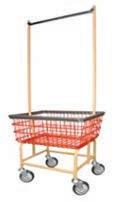





a screw has probably poked its way through a hole in the basket and is scraping the outer drum. Address this as soon as possible.
Turn the drum so the nail is facing the lint screen under the basket. Then just open the lint compartment and wiggle the nail to loosen it. It should come right out.
In conclusion, many, but not all, equipment failures are related to a lack of required maintenance, especially when lint is involved. When in doubt as to what to do in response and when, refer to your equipment’s maintenance manuals.
Also, keep in mind that when you suspect a part is bad, you have the advantage of identical machines to compare with. Many times, simply swapping out the bad part with a known good one from another machine will lead you to success.
Paul Russo owned and operated multiple laundromats in New York City for more than 40 years before retiring in 2018. You’re welcome to direct any questions or comments for him to Editor Bruce Beggs at bbeggs@atmags.com.


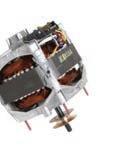







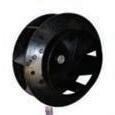








2024 RATES: One- to five-time rate: $3.15 per word, boldface $3.25 per word. Minimum charge: $50.00 per ad. Call or write for our six- and 12-time rates. If box number is used, add cost of 5 words.


Display classified rates are available on request. All major credit cards are accepted.
DEADLINE: Ads must be received by the 1st of the preceding month. For
example, for a July ad, the closing date is May 1st.
Must accompany order.










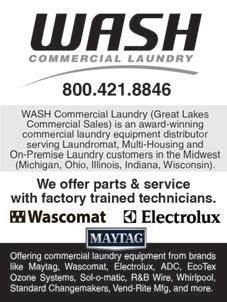






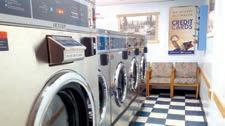
































B&C Technologies recently celebrated the 2023 achievements of its leading distributors during its annual meeting at its Florida headquarters.
Laundry Systems of the Carolinas, Spartanburg, South Carolina, was named top distributor, followed by E. Weinberg Supply Co., Minneapolis, Minnesota, and Image Distributors Canada, Calgary, Alberta.
Their efforts have been crucial in expanding B&C’s market presence across various regions, the laundry equipment manufacturer says.
The highlight of the event, B&C says, was the presentation of the President’s Legacy Award, an honor bestowed upon longstanding partners who have significantly contributed to the company’s success.
This year’s recipients included Laundry Systems of the Carolinas, E. Weinberg Supply Co., Image Distributors Canada, and Washex Machinery Co., Burbank, California. They have demonstrated an unwavering commitment to excellence, B&C says, and have been instrumental in its sustained growth.
Commercial laundry and drycleaning equipment distributor EVI Industries, based in Miami, has acquired Lakeland, Florida-based Laundry Pro of Florida Inc., a distributor of commercial laundry products and a provider of related installation and maintenance services. The purchase price was not released.
Adding Laundry Pro significantly increases EVI’s market share in Florida, EVI reports, and includes an experienced team with longstanding customer relationships and strategically valuable product lines.
It will enhance EVI’s customer value proposition and immediately yield growth and profitability when combined with its Southeast operations, the rapid deployment of its customer-facing technologies, and other benefits of being an EVI company, it adds.
For the 12 months ended May 31, Laundry Pro generated revenues of approximately $12 million, derived from equipment and parts sales and the performance of installation and maintenance services.
Laundry Pro will operate under its existing name and with its current team to provide continuity to customers, employees and vendor partners, as is customary under EVI’s operating model.
“We appreciate the thoughtfulness Ron Jansen and his family undertook throughout this process,” says Henry M. Nahmad, EVI chairman and CEO. “We are pleased to welcome the Laundry Pro team to the EVI family, and we look forward to their valuable contributions over the long term.”
Setomatic Systems – SpyderWash, a provider of payment technology used in vended laundries, reports it has named Sam Husain, based out of Dallas, Texas, as its new regional sales manager for the Southeast and Midwest.
Husain joined the commercial laundry industry in 2018 as a sales representative for Commercial and Coin Laundry Equipment Co. From there, he went on to serve as director of operations and general manager with Alliance Laundry Systems Distribution.
“Sam has a well-proven track record of helping his customers maximize their profitability,” says John Kelly, vice president of sales for Setomatic – SpyderWash. “He will be a major asset to our distribution and route operator partners, as well as laundromat owners, throughout the South and Midwest.”
In his previous roles, Husain was responsible for managing sales and the day-to-day operations of one of Texas’ largest distributors. He was also responsible for managing the relationships with that company’s largest customers.

“I am drawn to Setomatic-SpyderWash due to it being a true family operation,” Husain says. “They put their customers first, and there is nothing they won’t do to help their customers succeed.”
Commercial laundry equipment manufacturer Alliance Laundry Systems reports it has promoted John Endahl to general manager of the Alliance Laundry Systems Distribution West Region’s South Gate, California, office.
“John has been a proven performer since he joined the sales staff at our Los Angeles area office,” says Craig Dakauskas, senior vice president of Americas Commercial for Alliance. “I’m confident he will implement initiatives that will drive continued excellence in customer service.”
Endahl started as a multi-housing and onpremises laundry sales manager with PWS Inc. in 2020, before Alliance acquired the distributor. Despite the challenges of the pandemic, he and his team delivered excellent results that year through to the present, Alliance says.

Prior to joining the manufacturer, Endahl held several management roles in sales and marketing, including general manager for CompUSA, where he was involved with the first Apple store build-out.
Tide® laundry detergent and retail giant Walmart have entered into a joint effort to promote to consumers a more sustainable, eco-friendly choice when doing laundry: washing in cold water.
The multi-month campaign includes in-store product sampling and demos, digital advertising, in-store signage, social media promotion and more to help establish cold water as an “eco-habit,” while underscoring the benefits of cold-water washes.
Americans do over 30 billion loads of laundry a year, and Tide is aiming to turn 75% of laundry loads in North America to cold-water washing by 2030.

